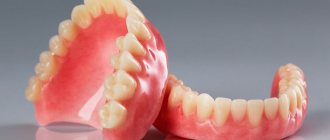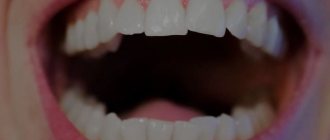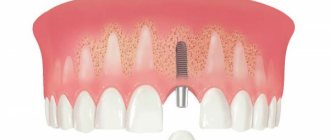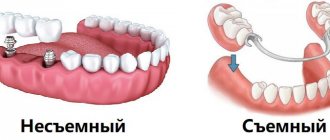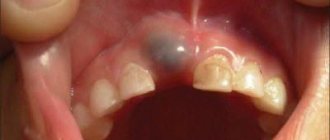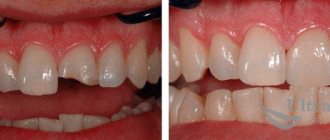It may take one minute or an hour, using a drill and a scalpel, but there is no way to avoid it.
Tooth extraction is a surgical operation to remove a tooth from its socket. A basic dental procedure that can scare anyone. Fear of removal is due to the idea of ancient times, when they did not think much about the patient’s comfort, much less about good anesthesia.
The fear has not gone away, but approaches to dentistry have changed dramatically. Let's look at when it is necessary to be examined by a dental surgeon, what options are available for tooth extraction, and how to quickly recover after surgery. We will also consider frequently asked questions to the dentist.
Indications for removal:
- a painful tooth provokes the development of a cyst, negatively affects the function of the trigeminal nerve, causing its inflammation;
- abnormal position of the tooth, improper eruption, which affects the bite;
- constant injury by the edges of the crown of the mucous membrane, tongue due to the abnormal size of the tooth or its shape - this factor also affects the bite;
- multi-rooted teeth that provoke inflammation of the cyst - osteomyelitis;
- chronic inflammatory processes – periodontitis, impossibility of non-surgical treatment;
- advanced caries complicated by pulpitis, periodontitis, neuritis or odontogenic osteomyelitis.
After carrying out diagnostic measures, the doctor identifies the causative tooth and prescribes its removal. This happens in one session under local anesthesia.
Is it necessary to remove wisdom teeth?
Due to the fact that wisdom teeth can be called “late” teeth, and in fact – “vestigial”, their formation and growth are associated with many circumstances, which, in turn, can negatively affect both the wisdom teeth themselves and other teeth and in general the jaw.
Thus, the incorrect position of wisdom teeth during their formation can lead to malocclusion, have a negative impact on the neighboring tooth, cause pericoronitis, inflammation of the trigeminal nerve, osteomyelitis and dental cyst.
In the case when the wisdom teeth are healthy and do not cause any discomfort (they are positioned correctly, provided with due attention during hygiene), it will be unnecessary to remove them. But when their formation and growth are associated with painful sensations, inflammatory processes, as well as deformation of the jaw dentition due to the pressure of wisdom teeth on neighboring teeth, removal is necessary.
Does it hurt to remove?
A typical mistake made by patients before tooth extraction is the desire to start the procedure faster in order to “get over it” faster. In this case, the anesthesia does not have time to completely dissipate through the tissues and the patient will face a painful procedure. Therefore, you need to wait a certain time, which is suggested by the dentist.
Stress factors can also affect pain during surgery. During the effect of anesthesia, you need to remain as calm as possible, which will allow you to carry out the procedure quickly and with the least risk.
How much does tooth extraction cost?
How much does tooth extraction cost?
Many patients ask the question: how much does tooth extraction cost and why do the prices for removal differ so much in different clinics? To answer this, we present you with a few defining points:
- diagnostics
- tools
- doctor's experience
- time allotted for the procedure
It is these nuances that determine not only the final cost of the operation, but also the positive result itself, which, if diagnosed correctly by an experienced doctor, is guaranteed.
Removal methods
There are two main types of extirpation - a simple removal method and a complex method.
Complex removal method
It is carried out in cases where there is no access to the tooth, application of forceps is impossible and additional access must be made through an incision in the gums. During a complex operation, the tooth is not removed immediately, but in parts.
For this, a whole set of special tools is used:
- laser,
- saw,
- scalpel,
- burs.
Complex removal may be indicated in the case of a cystic formation under the causative tooth, fistula, dystopic wisdom tooth, or retention. Contraindications to the procedure are pregnancy, allergies to anesthetic drugs, mental illness, problems with the endocrine system. But if certain conditions are created, extirpation can be carried out even in the presence of these contraindications.
Simple operation
This method does not require additional preparation; it is removed by applying standard forceps, after which the bleeding stops and further measures are taken to restore the dentition.
Molar tooth extraction procedure
The procedure will be the same in every dentistry. With high-quality modern equipment, the procedure is quick and painless. If a patient is afraid to have a tooth removed, then he must understand the consequences that such a decision will entail. One of them is pain, which may be stronger than after surgery under anesthesia.
Removal steps
How to pull out a molar, 8 stages of work:
- Examination and diagnostic procedures.
- Anesthesia of nearby areas.
- Ligamentotomy.
- Moving the forceps under the gum.
- Dislocation.
- Extraction.
- Inspection and treatment of the resulting hole.
- Stitching.
If the impacted figure eight is removed, then an additional tissue incision will be required. In this case, the gums are sutured after the molar is removed, and complete healing will take more time.
Until the next visit to the dentist, how the molar heals after removal should be monitored by the patient himself. If any unusual pain occurs, the dentist who performed the procedure should be contacted.
Anesthesia
Local anesthesia is necessary to increase patient comfort. It is inserted before the molar tooth is removed. But not all drugs have the same effect on the human body. Painkillers are divided into groups:
- Application – suitable only for simple procedures. Not used when working with adults.
- Infiltration – suitable for simple procedures, can be used to remove mobile incisors and molars.
- Conductive – used when complex removal is necessary or for complex work. Allows you to block the peripheral branches of the nerve to cover a large area.
- Intraosseous – the anesthetic is injected directly into the bone tissue, leaving the surrounding soft tissue sensitive.
- Intraligamentary – mainly used when working with children.
When selecting an anesthetic, the doctor should always find out about the presence of an allergy to any compound in order to select the correct composition for anesthesia. Thanks to these drugs, the patient does not have to wonder whether it hurts to remove a tooth.
Is it painful to remove a tooth root?
Thanks to modern anesthesia methods, the procedure is painless. Does it hurt to have a tooth pulled out? No, and discomfort appears only after the painkiller wears off.
Recovery after deletion
In the postoperative period, additional care for the socket is indicated to prevent complications. Possible complications are associated with the wrong choice of technique, an error during removal, systemic diseases, and improper care after surgery.
Bleeding very often occurs after surgery, which the dentist can treat with hydrogen peroxide and socket tamponade. If bleeding continues, the dentist uses hemostatic drugs to stop bleeding from the socket.
At home, after removal, you need to treat the hole with antiseptic drugs - this means rinsing the mouth with weak antiseptic solutions. To relieve pain, you need to take medications prescribed by your doctor. Swelling, inflammation, and itching may occur near the hole of the extracted tooth - you should contact your dentist with these complaints, as this is a sign of infection or the development of periodontal inflammation.
Hygienic procedures after removal remain unchanged, but direct contact of the toothbrush bristles with the socket should be avoided. While eating, you need to cover the hole with cotton wool and then rinse your mouth with warm water and soda.
Surgical dentistry has moved forward in many ways in terms of the technologies, drugs and techniques used. Today, the risk of inadequate surgery is practically absent, and the dentition can be restored in many ways. Surgical dentistry is directly related to orthopedics, orthodontics, and aesthetic dentistry, so the patient does not have to worry about an aesthetic defect after treatment.
Painless tooth extraction.
For painless tooth extraction, local anesthesia . Therefore, there is no need to worry about pain associated with this procedure. In this case, the main thing is to follow several rules of the postoperative period in order to minimize discomfort and pain:
- After tooth extraction, do not drink hot foods
- do not mechanically impact the removal site (tongue, food, toothbrush)
- do not rinse, do not drink alcohol, minimize physical activity
Depending on the specific situation and the task at hand, one of the methods of tooth extraction is used:
- traditional removal (mechanical removal)
- atraumatic removal (using ultrasound)
In some cases, tooth extraction involves serious surgical intervention, when not one of the above-mentioned options in its pure form is impossible due to one reason or another. Before removing a tooth, experts recommend taking an X-ray or tomography.
Kodak Carestream CS9300
Possible consequences and complications
Extraction, like any operation, can cause a negative reaction from the body. If your cheek is swollen, your throat hurts, or there is a sharp throbbing pain in the socket, there is a high probability of an inflammatory process.
Early complications:
- fainting, shock, collapse;
- fracture, dislocation of the jaw;
- perforation of the maxillary sinus (when removing an upper molar or premolar), falling of root fragments into the gum;
- trauma, dislocation, fracture of an adjacent or opposite tooth;
- severe bleeding, hematoma formation.
Late complications:
- inflammation of the alveoli (alveolitis);
- inflammation of peripheral nerves (neuritis);
- restriction of jaw movement (muscle contracture).
By contacting a specialist in a timely manner, the consequences of removal can be minimized.
Contraindications:
- Blood diseases
, which lead to disruption of its coagulation;
- Diabetes
. The disease prevents tissue regeneration, so when removed, the wound can take a very long time to heal. During this period, microorganisms that cause an inflammatory process can multiply;
- First trimester of pregnancy
;
- Allergic reaction to the products used
.
It is important to inform your dentist about any existing diseases. Indicate the medications you are currently taking. Under no circumstances should you hide the presence of allergic reactions, as this can be life-threatening. The removal of the lower wisdom tooth is carried out in the same way as the upper one. The operation technology is the same.
Let's start implanting the upper front teeth
a highly accurate surgical template
, individually made based on the CBCT image and using the 3D Shape intraoral scanner . Under the Straumann Bone Level SLActive implantation system, as part of a complete protocol for implantation of the upper anterior incisors.
Here you can observe the result of one-stage implantation of the front teeth; Straumann implants were installed. A bed for the implants was formed, which were installed in a strictly necessary position so that we could do aesthetic work not only on implantation, but also on further prosthetics of the upper anterior incisors.
You can see Straumann implants installed in exactly the right position
, as we planned. They are presented with the template removed. Bone biomaterial was placed in the sockets, which prevents the socket from collapsing in order to preserve the outer contour of the gum. In addition, in the area of the tooth that had a fistulous tract (tooth 11), in the photo it is on the right, a collagen membrane was sutured. The membrane was tunneled and secured with a single suture to allow bone to form and mature normally in the socket.
Here you see the same implants, but in front view. You can clearly see how the collagen membrane was fixed, and it should be noted that in order for the work to be aesthetic on the one hand, and minimally traumatic on the other, mucosal detachment was carried out using the tunnel method
with further installation of the membrane.
